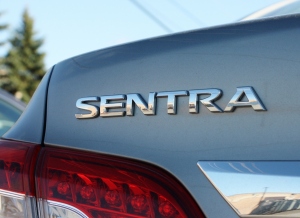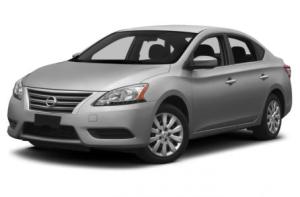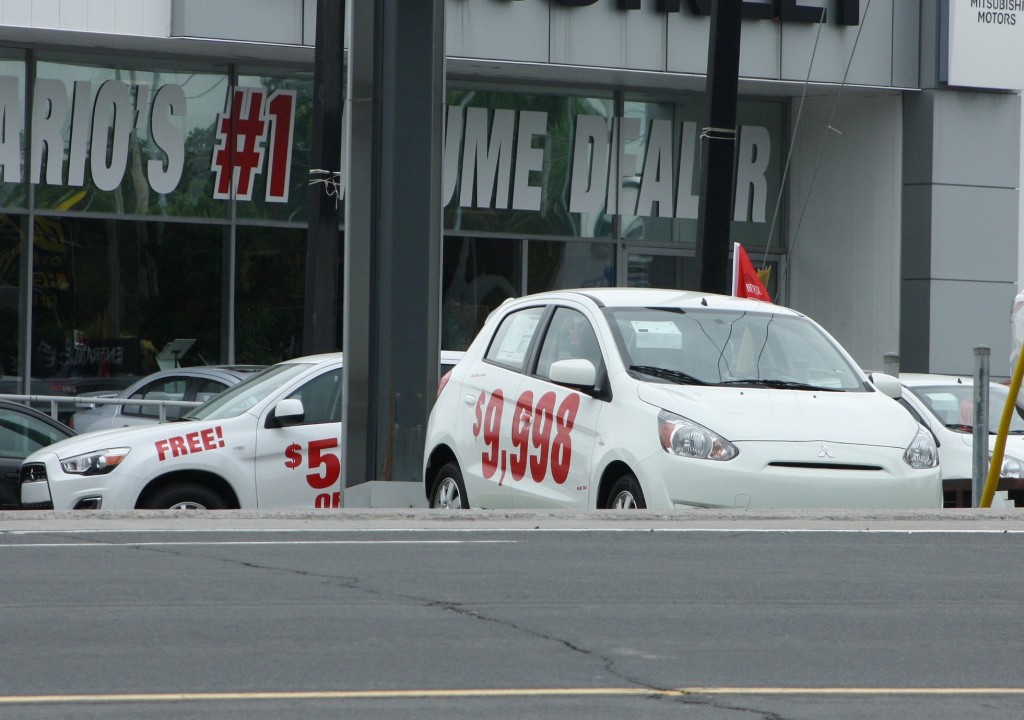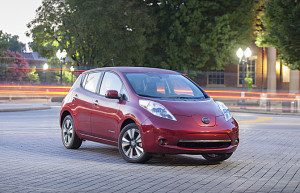
Sales of the Nissan LEAF topped 1,000 units in Canada in 2014, a new high for the all-electric vehicle (Image: Nissan)
If you’ve see Nissan Canada swaggering around lately, there’s good reason for it.
The Canadian division of Nissan Group – much like its American brother – boasted killer sales in 2014, vastly growing their customer base and setting company sales records. In an economic climate that had buyers demanding “value!”, Nissan offered it with a lineup of competent, ‘smart buy’ vehicles.
Not bad for an automaker that was getting pretty invisible just a few years ago.
If you think of Nissan as the overlooked high school football player who scores the winning touchdown in the last seconds of the game, I think they can be forgiven for any showboating.
In November of this year, the company’s Nissan and Infiniti brands posted a combined 21.5% year-over-year sales gain compared to Nov., 2013. Year-to date, Nissan Canada sales were up 28.2% in the first 11 months of 2014.
These are serious gains – enough to push Nissan into the Number 6 spot in Canada’s brand ranking and capture 6.3% of the market.
On Nov. 13 of this year, Nissan Canada celebrated another milestone when they passed the 100,000 units mark for the first time since entering the Canadian market in 1966.
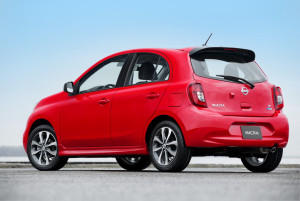
Canada’s cheapest car proved solid and fun to drive, leading to big sales for the Nissan Micra (Image: Nissan)
Leading the sales surge was the popular Rogue compact crossover (sales up 77.8% year-to-date), the spacious Sentra sedan, and the surprise success of the Micra subcompact, which was touted as Canada’s cheapest car ($9,998) when it went on sale this past spring. A total of 924 Micras left dealer lots in November, with 6,987 sold between April and November.
Even the all-electric LEAF, which has been on the challenging EV market for several years now, posted a 131% year-to-date sales gain, topping 1,000 units sold in 2014.
The automotive landscape at Nissan looks to remain fairly unchanged for 2015 – after all, why mess with a good thing? – but the company will have to keep on its toes to ensure it doesn’t lose any of the ground it gained this past year. With gas far cheaper than it was a year ago, it seems opportune that Nissan’s newest models – the redesigned Murano and next-generation Titan pickup (to be unveiled in January) – are on the large side of the vehicle spectrum.
Having had such success in the small car market, it would make sense that Nissan would seek to make gains in the large vehicle segment.
